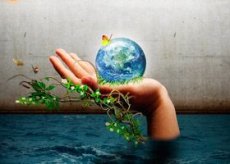New publications
Self-cleaning swimming pool to be created in London
Last reviewed: 02.07.2025

All iLive content is medically reviewed or fact checked to ensure as much factual accuracy as possible.
We have strict sourcing guidelines and only link to reputable media sites, academic research institutions and, whenever possible, medically peer reviewed studies. Note that the numbers in parentheses ([1], [2], etc.) are clickable links to these studies.
If you feel that any of our content is inaccurate, out-of-date, or otherwise questionable, please select it and press Ctrl + Enter.

An international group of designers from Germany and Holland decided to use part of one of the huge buildings in the very center of London to create a place for relaxation with a public swimming pool and at the same time an original art object.
The new design project is called Of Soil and Water. The designers themselves describe their project as a special place for relaxation and swimming, while the water in the reservoir will be filtered naturally.
The project was conceived by Rotterdam studio, Ooze Architects and Slovenian artist Mardzherita Portch. According to the plans, the art object will act as a public place for relaxation, while the water in the pool will be purified not by chemicals, but naturally by wetland flora.
The designers chose a building located in the new Lewis Cubitt Park (next to the Central Saint Martins design school, which is undergoing renovation) for their art object.
There is currently a construction site around the park, but when the reconstruction work is finished, there will be a large number of buildings around the park. With their new project, the group of designers wanted to show that it is quite possible to use natural, organic cleaning methods in urban conditions.
Similar methods, where natural materials are used for cleaning instead of chemicals, are widespread in Australia and Germany. Such systems are usually found in private homes or sanatoriums.
The pool with natural self-cleaning will be divided into three zones: for swimming, filtration and regeneration. In the filtration zone there will be special algae (both underwater and floating on the surface), which will clean the water and saturate it with oxygen.
The art object has a fine line between a place for rest and art, therefore, to control the ratio of water volume, the number of filters and plants, a rigid cover will be installed, which will also help to monitor the number of swimmers. One of the authors of the project notes that the number of swimmers in the pool cannot be more than 163 people, this figure is somewhat less than the designers planned, but it is impossible to make the reservoir larger in volume.
The pool in London Park will be raised two meters above the ground, it will be built of stone and brick, measuring 40x10m.
Architect Eva Pflannez noted that the group faced the important task of creating a small environment, a living laboratory, in which it would be possible to test whether it is possible to artificially create a self-sustaining system that includes only water, earth and the human body.
Such a pool can be used throughout the year, but the number of people wishing to swim in such a reservoir daily will be limited, depending on how quickly the plants cope with the purification of water.
Designers plan to plant grass, flowers, and shrubs around the water's edge. The environment around the pond will change according to the season.
